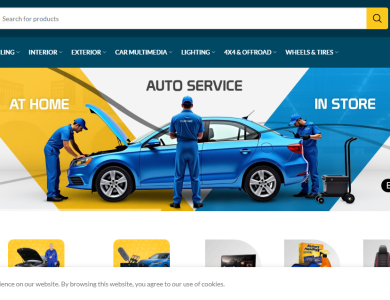
The Role of Website Maintenance in Improving User Experience
The Role of Website Maintenance in Improving User Experience
In today’s digital age, having a well-maintained website is crucial for ensuring a positive user experience. Website maintenance is often overlooked but is an essential aspect of keeping your site functional, secure, and user-friendly. This article delves into the significant role that website maintenance plays in enhancing user experience and why it should be a top priority for businesses and organizations.
Understanding Website Maintenance
Website maintenance involves a series of tasks performed regularly to keep a website running smoothly. These tasks include updating content, fixing broken links, ensuring compatibility with the latest browsers and devices, and performing security checks. Proper maintenance helps ensure that users have a seamless experience while navigating your site.
Why Website Maintenance Matters
- Performance Optimization
A well-maintained website performs better. Regular updates and optimizations can help reduce load times, which is crucial for user satisfaction. Slow-loading pages can frustrate users and lead them to abandon your site, negatively impacting your bounce rate and conversion rates. By optimizing images, scripts, and server performance, you can ensure that your site loads quickly, providing a smoother and more enjoyable experience for visitors.
- Security Enhancements
Security is a significant concern for any website. Regular maintenance helps to patch vulnerabilities, update security protocols, and protect against cyber threats. An insecure website can lead to data breaches, which not only compromise user data but can also damage your reputation. Keeping your site secure through regular updates and monitoring helps build trust with your users and protects their information.
- Content Relevance
Outdated content can make a website look neglected and unprofessional. Regularly updating your content ensures that information is current and relevant, which is crucial for maintaining user engagement. Fresh content also improves your site’s SEO, helping it rank better in search engine results and attract more visitors.
- Compatibility Across Devices
As technology evolves, new devices and browsers are introduced. Regular maintenance ensures that your website remains compatible with the latest technology. A site that functions well on all devices and browsers provides a consistent user experience, which is essential for retaining visitors. Ensuring compatibility can prevent issues such as broken layouts or malfunctioning features, which can frustrate users and drive them away.
- Error Fixes
No matter how well a website is designed, errors and bugs can occur. Regular maintenance allows you to identify and fix these issues promptly. Broken links, incorrect redirects, or malfunctioning forms can disrupt the user experience and hinder the functionality of your site. By addressing these issues quickly, you can maintain a smooth and enjoyable experience for your visitors.
- Improved Functionality
Over time, user expectations and technology change. Regular maintenance helps to ensure that your site’s functionality meets current standards and user expectations. This might involve updating features, integrating new tools, or improving navigation. Enhancing functionality based on user feedback and technological advancements can make your site more user-friendly and engaging.
The Benefits of Regular Website Maintenance
- Enhanced User Satisfaction
A well-maintained website provides a better overall experience for users. By ensuring that your site is fast, secure, and free of errors, you create a more enjoyable environment for visitors. Happy users are more likely to return to your site, recommend it to others, and engage with your content.
- Increased Traffic and Engagement
Search engines favor websites that are regularly updated and well-maintained. By keeping your site fresh and relevant, you improve its SEO, which can lead to increased traffic. Engaging content and smooth functionality also encourage users to spend more time on your site, interact with your content, and explore your offerings.
- Reduced Downtime
Regular maintenance helps to prevent issues that could lead to downtime. Downtime can result in lost revenue, decreased user trust, and damage to your reputation. By proactively addressing potential problems, you can minimize downtime and keep your site operational at all times.
- Cost Savings
Addressing issues as they arise can be more cost-effective than dealing with major problems that develop from neglect. Regular maintenance allows you to fix minor issues before they escalate, reducing the need for costly emergency repairs. Investing in regular maintenance can save you money in the long run and ensure that your website remains in top condition.
Best Practices for Website Maintenance
- Create a Maintenance Schedule
Develop a regular maintenance schedule to ensure that tasks are performed consistently. This should include updates, backups, security checks, and performance reviews. Having a schedule helps to stay organized and ensures that maintenance tasks are not overlooked.
- Monitor Performance and Security
Use tools to monitor your website’s performance and security. Analytics tools can provide insights into user behavior and site performance, while security tools can alert you to potential threats. Regularly review these metrics to identify areas for improvement.
- Update Content Regularly
Keep your content fresh and relevant by updating it regularly. This includes blog posts, product information, and other site content. Fresh content not only engages users but also improves your SEO.
- Test Across Devices and Browsers
Regularly test your website across different devices and browsers to ensure compatibility. This helps to identify and fix any issues that may affect the user experience.
- Backup Your Website
Regularly back up your website to protect against data loss. In case of an emergency or technical issue, having a recent backup ensures that you can quickly restore your site to its previous state.
Conclusion
Website maintenance plays a critical role in improving user experience. By ensuring that your site performs well, remains secure, and offers relevant content, you create a more enjoyable and engaging environment for your visitors. Regular maintenance helps to prevent issues, enhance functionality, and keep your site aligned with current standards and user expectations. Investing in website maintenance is not just about keeping your site operational—it’s about providing a seamless and positive experience for your users that encourages them to return and engage with your content.



